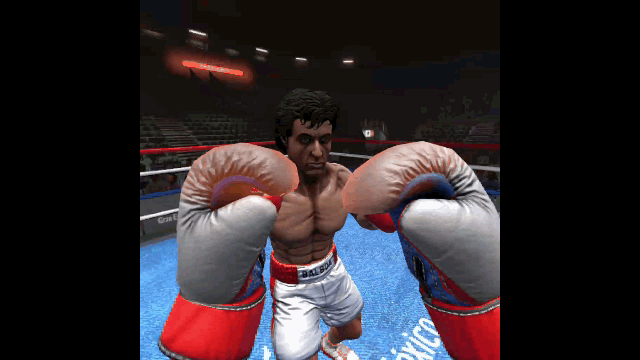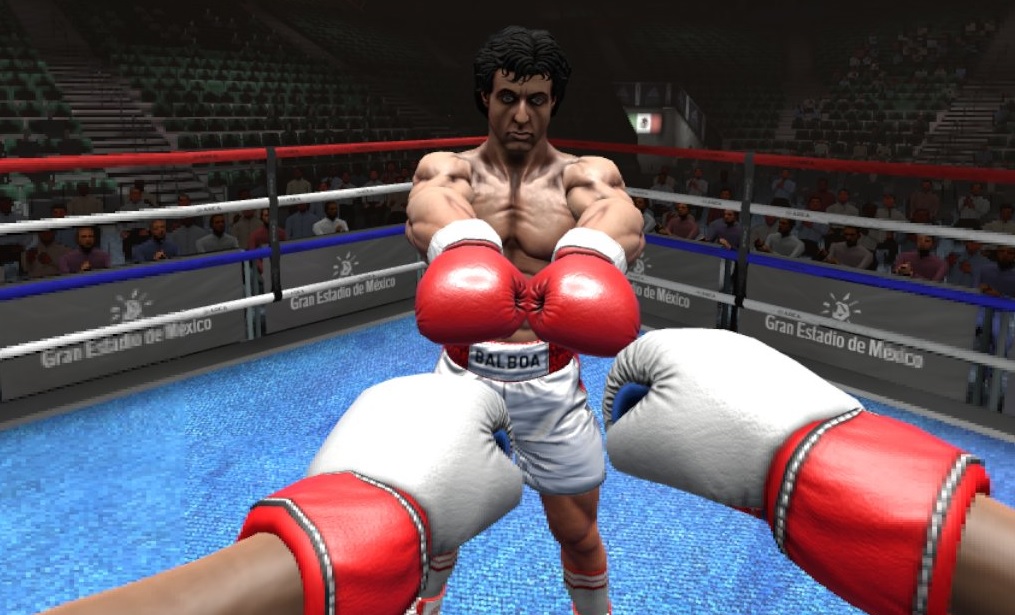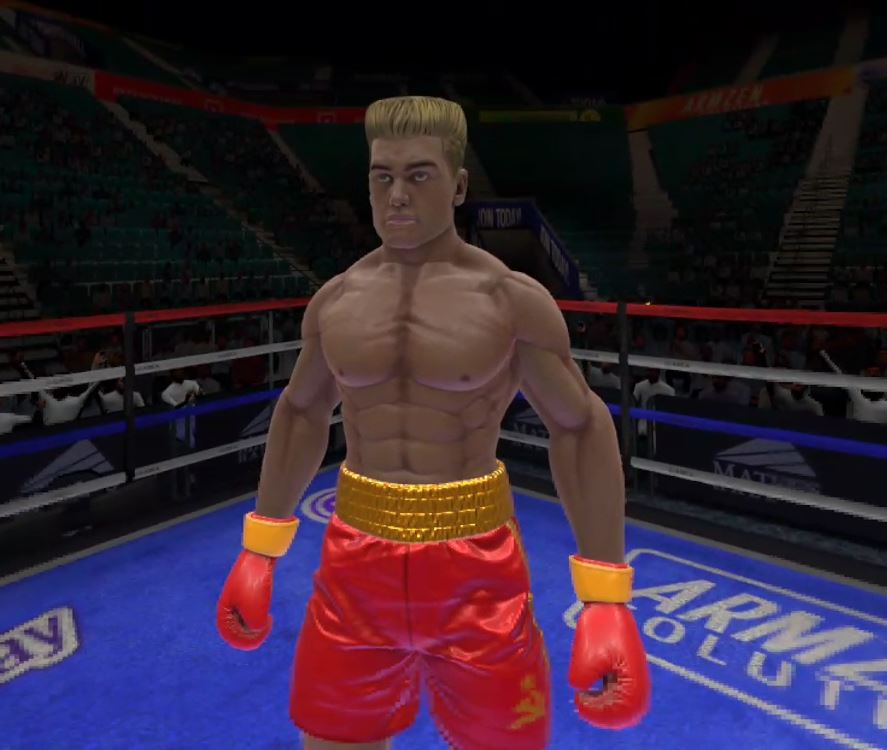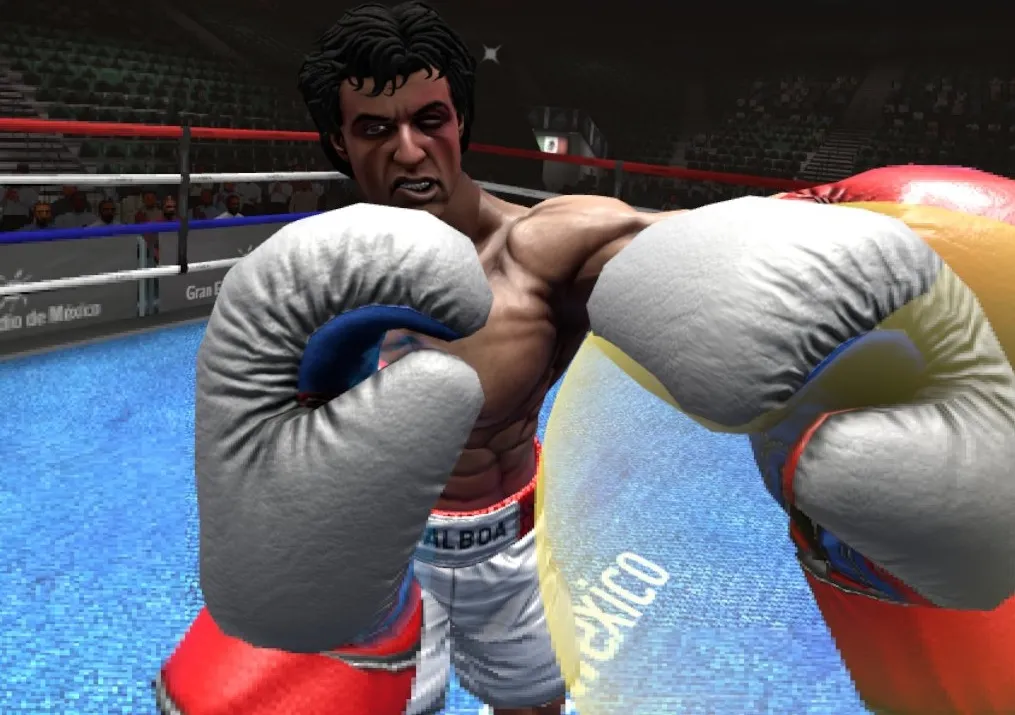The Oculus Quest is, despite what your heart may desire, not a wireless Oculus Rift. The launch lineup is shaping up to include a lot of the Rift’s best titles, but many of them have been downgraded or adapted to fit onto the standalone Oculus Quest. Creed: Rise to Glory is a great example of some of the sacrifices developers may need to make in order to cram their high-fidelity VR games onto hardware designed around a mobile chipset.
For what it’s worth, Creed: Rise to Glory is still a feature-packed VR boxing game that puts you in the shoes of Adonis Creed, son of iconic Rocky movie franchise character, Apollo Creed. Between a decent tier-style campaign mode, lots of training exercises, simple freeplay setups, and a competitive PvP mode, there are lots of ways to get your sweat on with some virtual boxing fun.
Before we go much further, this is what we had to say about the original, Rift version of Creed: Rise to Glory, when it launched last year:
Creed: Rise to Glory is the best all-around boxing game VR has seen yet. While its serviceable campaign mode lacks the depth and variety that we’ve come to expect from Survios releases and some of the controls are a bit finicky, it more than makes up for it with a litany of training mini games and an addictive PvP mode. Trading blows, ducking shots, and scoring a powerful knockout against someone in immersive VR is about as close to an actual boxing match as you can find from the comfort of your own home.
Here is a GIF showing off my smooth moves against none other than Rocky Balboa. Please note that this is a highly-compressed GIF:

I won’t spend a ton of time talking about the game as a whole — you can read that original review for more details on that — but instead will focus on how this port differs from the original version. To be clear, this is the entire game. Survios managed to jam the whole experience onto the Oculus Quest with all of its game modes and fighters included. That alone is quite admirable. Unfortunately, the game suffers as a result.
For starters, the visual downgrade is a bit jarring. Textures are mostly flat with far less lighting to enhance things and fighters are just way less detailed when they get up in your face. The environments surrounding the rings feel empty and barren for the most part and it’s all around a major downgrade that’s noticeable if you’ve ever played the original. It’s honestly to the point that the art style just doesn’t flow right without the higher fidelity visuals.
Then when it comes to performance the Quest really struggles to keep up. Creed is a very fast game that requires quick reaction time, lightning fast reflexes, and the ability to move around and respond without hesitation. But that’s hard to do when the game chugs, drops frames, and has trouble keeping things flowing in the heat of a fight. Out of all the full games and demos I’ve tried on Quest so far, and that number is well over a dozen at this point, Creed may have the worst performance.
Thankfully it isn’t a consistent problem. It seems to warm up after a fight or two and smooth out some, oddly enough. Some fights didn’t have any performance issues, while others did. It was hard to figure out what exactly caused it and when it did happen it was noticeable enough to impact gameplay ever so slightly, but not so bad that it was unplayable. The core fun factor is still there, but it’s hampered a bit.

The biggest issue for me with Creed on Quest is how the tracking limitations of just four front-facing Insight cameras is never gonna be as good as a full roomscale setup for the original Rift, or even four Rift S with its five surrounding cameras. Most notably Quest had trouble keeping up when I wanted to block.
I don’t consider myself a great boxer by any means, but I’ve been to boxing gyms and have received instruction from actual boxing coaches and sparred with people that know what they’re doing. As a result, I can tell you with certainty that one of the first things you learn is to always keep your hands up and protect yourself. Well, that’s tough to do on Quest because if your hands are in front of your face and too close to the tracking cameras then the headset loses tracking and you’re a sitting duck to your opponent.
The workaround I figured out was to keep my hands a few inches in front of my face, sort of floating there, and the game interprets that as a good blocking position when in reality it feels like I’m trying to hug someone. Creed on Rift is exhilarating and realistic, but Creed on Quest feels like an exercise in trying to figure out how to avoid tracking issues.
Once you get used to retraining your brain in terms of how you play, Creed on Quest is still a ton of fun. The training mini games are still excellent, the music is great, and the huge cast of characters (including the Rocky Legends update) is fantastic. Playing as Apollo Creed and taking down Drogo as a rewriting of Rocky IV’s history left me very, very satisfied.

Creed: Rise to Glory seems to be one of the most brutally downgraded games in the entire Oculus Quest launch lineup so far. While far from being unplayable, everything from the visuals, performance, and gameplay quality suffer in the switch from a PC-powered Rift to a standalone device like Quest. The meat of it all is still good fun and if you love the pre-installed demo when you get your Quest you’ll probably love the full game, but this is definitely not the same experience as the original incarnation.
Creed: Rise to Glory launches for Oculus Quest on May 21 when the headset releases. The game will be a cross-buy supported title so if you own it on Oculus Home for Rift you’ll have it on Oculus Quest too. You can read our review of the Rift version here. Read our Game Review Guidelines for more information on how we arrived at this score.
























